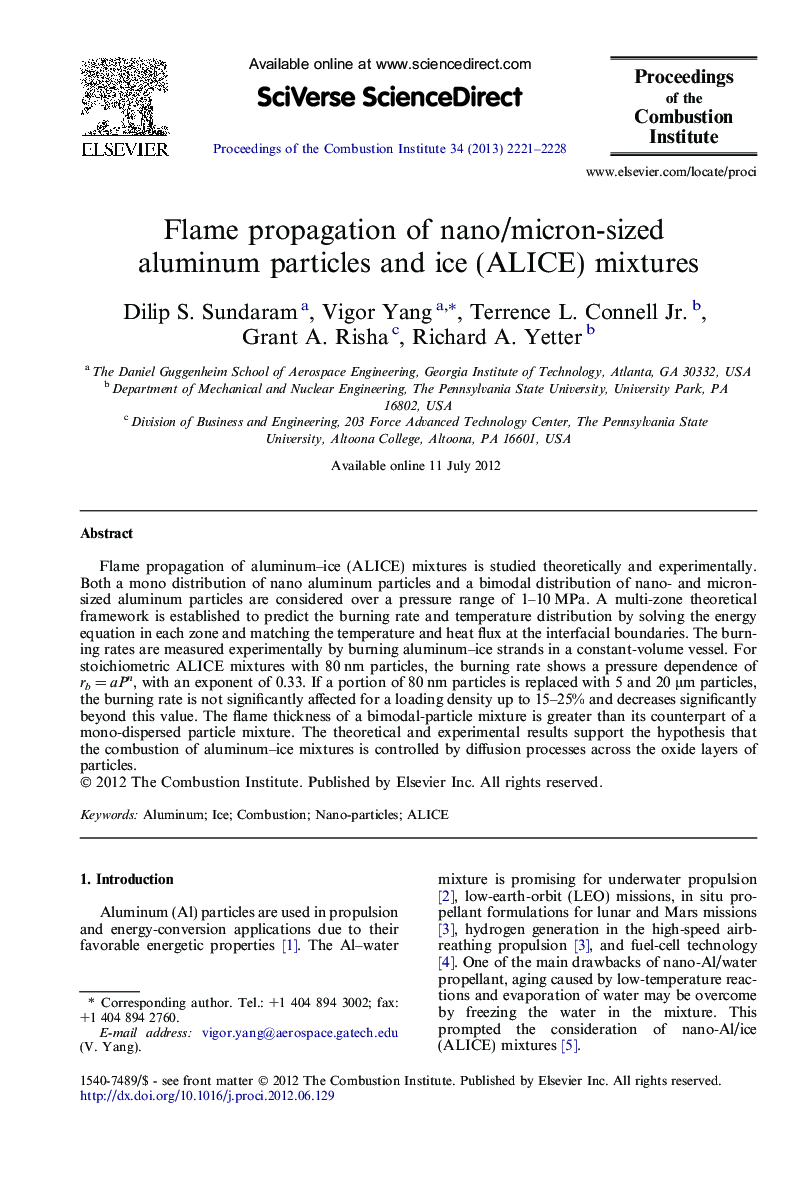| Article ID | Journal | Published Year | Pages | File Type |
|---|---|---|---|---|
| 240846 | Proceedings of the Combustion Institute | 2013 | 8 Pages |
Flame propagation of aluminum–ice (ALICE) mixtures is studied theoretically and experimentally. Both a mono distribution of nano aluminum particles and a bimodal distribution of nano- and micron-sized aluminum particles are considered over a pressure range of 1–10 MPa. A multi-zone theoretical framework is established to predict the burning rate and temperature distribution by solving the energy equation in each zone and matching the temperature and heat flux at the interfacial boundaries. The burning rates are measured experimentally by burning aluminum–ice strands in a constant-volume vessel. For stoichiometric ALICE mixtures with 80 nm particles, the burning rate shows a pressure dependence of rb = aPn, with an exponent of 0.33. If a portion of 80 nm particles is replaced with 5 and 20 μm particles, the burning rate is not significantly affected for a loading density up to 15–25% and decreases significantly beyond this value. The flame thickness of a bimodal-particle mixture is greater than its counterpart of a mono-dispersed particle mixture. The theoretical and experimental results support the hypothesis that the combustion of aluminum–ice mixtures is controlled by diffusion processes across the oxide layers of particles.
